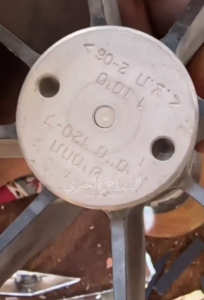13 results
Current Filter
Illumination Munition
Munitions intended to illuminate an area or position using visible or other light, rather than killing or wounding a target. There are different types of illumination rounds which can dispense flares, infrared devices, or certain incendiary materials such as white phosphorus. They can be also used to highlight and mark targets in dark or low-visibility environments.

Analyst Note:
The M824 60 mm mortar projectile dispenses a parachute-retarded illumination flare which burns for 35 seconds. The tail portion of the munition (seen here) separates from the forward (body) portion and is sometimes found along the line of fire. (ARES)
Analyst Note:
These M485 series 155 mm artillery gun projectiles are painted yellow to indicate their functional type: illumination rounds. The M485 series of illumination projectiles are base-eject munitions that expel a parachute-retarded illuminant canister which casts light over the battlefield as it descends. (ARES)
Analyst Note:
Israeli illumination munitions—often finished in a distinctive yellow—are sometimes mistaken for high explosive munitions by observers more familiar with the NATO or U.S. marking systems. This image shows an M485-pattern illumination projectile, a base-eject type that uses a parachute-retarded canister containing a powerful candle to illuminate the battlefield.




















